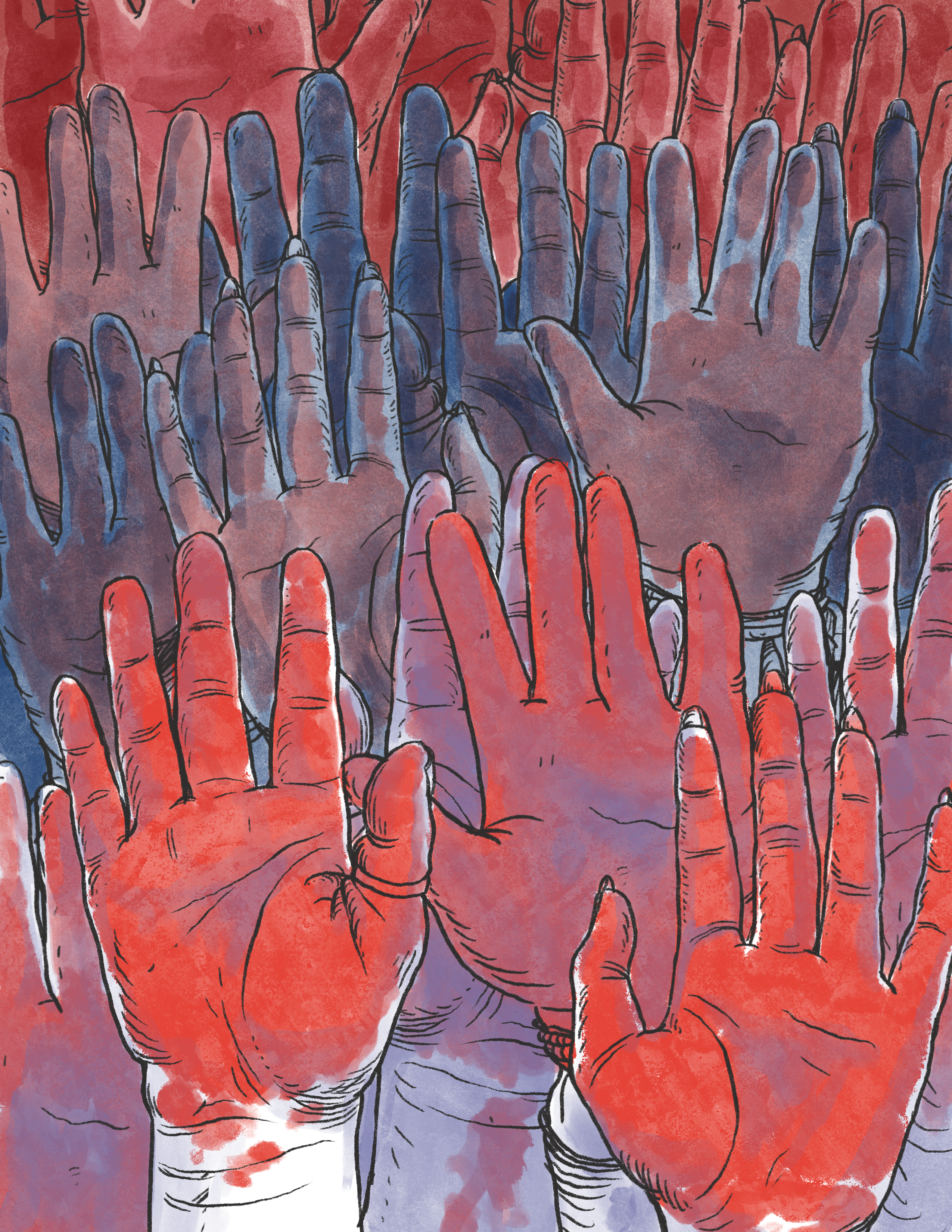On March 15, 2025, over 100,000 demonstrators gathered around Republic Square in Belgrade, Serbia, to protest government corruption facilitated by President Aleksandar Vučić. The protest was just one of many nationwide that erupted after the collapse of a newly built train station canopy in the city of Novi Sad in November 2024, which killed 15 people. Since then, hundreds of thousands of Serbians have mobilized across the country to demand more effective and transparent governance. While the protesters are justified in their quest for accountability in an increasingly undemocratic and corrupt state, the movement relies far too heavily on vague nationalist and anti-corruption appeals. This ideological vacuity threatens the movement’s ability to achieve meaningful systemic change, keeping Serbia on its current path of populist authoritarianism and alignment with Russia.
Vučić, a strongman populist, has controlled Serbia since 2014 and consolidated his grip on power by maintaining strict control over the press while benefiting from a surging economy. However, it is because of this economic growth, not in spite of it, that mass protests have emerged against him. Serbia’s economic success under Vučić has been made possible due to significant foreign direct investment (FDI), largely from China; Serbia receives loans that fund infrastructure projects, such as the train station renovation, while China expands its influence in Europe. The contracts signed with Chinese firms are opaque, and loans that come from Chinese state banks often include preconditions that require Chinese construction firms to be involved in infrastructure projects. Many Serbians blame the structural failure of the Novi Sad station on a combination of administrative negligence and government-sanctioned, nonmeritocratic contracting practices.
After the train station collapsed, mourning quickly turned into outrage, inciting the largest protest movement Serbia has seen in decades. Beginning in Novi Sad, students at local universities took to the streets, advocating for increased transparency in infrastructure and accountability for those responsible for the accident. The fledgling student movement was joined by tens of thousands of Serbians across the country. Opposition politicians set off smoke grenades in parliament, and the historically state-subservient public broadcasting network began reporting on the protests without smearing the participants. The goals of the protestors boast an 80 percent approval rate across Serbia, signifying that the movement is a true national struggle.
Amid such a popular anti-government campaign, one may be inclined to believe that Serbia is on the precipice of major systemic change. But beyond the initial, more specific demands of the student protesters, it is unclear what exactly systemic change would entail. The movement’s academic originators tend to be more liberal, and the initial protests emphasized fair democracy and increased investment in higher education. However, as the protests have developed, they have taken on a much more nationalist identity: EU flags are stripped from protesters’ hands, and ultranationalist (or sometimes Russian) flags fly in their place. Banners asserting Serbia’s right to Kosovo are an increasingly common sight, a far cry from the movement’s initial democratic objectives.
The movement has garnered widespread support through its appeal to nationalism. As a result, it is evolving into the same nationalist populism it seeks to displace. Without any discernible ideological opposition, a political figure as savvy as Vučić is likely to weather the storm. Even if he were to be replaced, his successor would likely be another nationalist with broad populist appeal, lacking a vision of a significantly improved Serbia.
Policy taking a backseat to cultural ideology is not an exclusively Serbian political dilemma. While populists have used appeals to nationalism to gain support in many parts of the globe, they are especially successful in Eastern Europe. Countries keen on reaping the economic benefits of EU membership are forced to adapt their institutions according to EU Commission standards, leading to ideological convergence among established political parties. When policy decisions feel imposed or inevitable, blanket nationalist and anti-corruption appeals offer a dependable political strategy, especially in countries where effective sovereignty has been rare under the shadow of Soviet or Yugoslav influence. Hungarian Prime Minister Viktor Orbán has exploited post-socialist anti-establishmentarianism to keep Hungarian politics in a chokehold, retaining the office of prime minister since 2010. In Poland, centrist parties have proven politically vulnerable to nationalist-traditionalist appeals in the form of the Law and Justice party. In Serbia, public opinion has shifted sharply against EU accession in the last two decades, and entry negotiations are deadlocked. For at least the past decade, far-right appeals to the nation have proven to be the most effective rallying cry across the region, including for Vučić himself.
The central goals of accountability and transparency that molded the Serbian student protest movement are rational and justified, but as the movement grows, even as government officials resign, it has unquestionably become something more—something revolutionary. As the protesters would tell you, drastic change is needed in Serbia: Free speech is suppressed, opposition politicians are marginalized, and bureaucracy is rife with cronyism. But until the anti-government movement finds an identity that champions pragmatic political alternatives rather than vague demands for institutional reform, Serbia will remain trapped in a cycle of populist authoritarianism. The movement’s overwhelming verdict that corruption is bad and the nation is good may be an effective universal appeal, but it gives a fuzzy picture of Serbia’s future.
